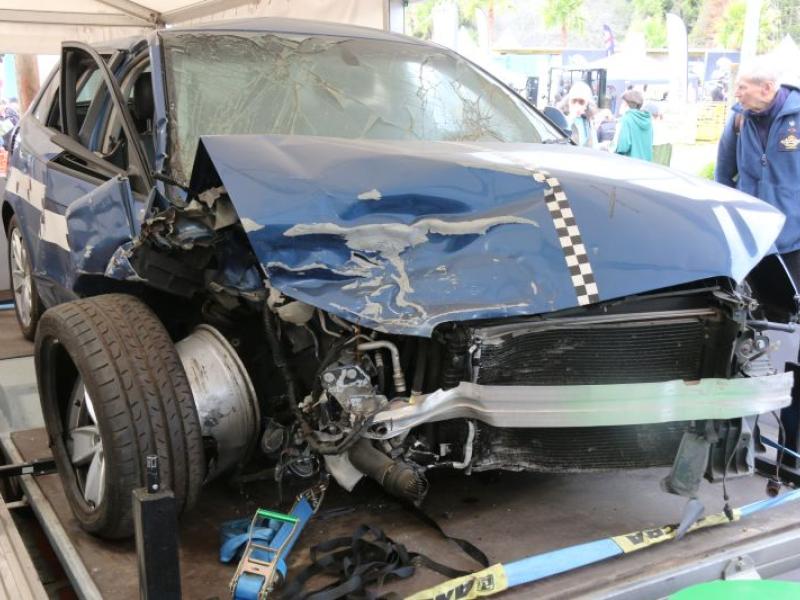The world of Fleet Management has many facets, so much so that covering all of them in one feature is nigh on impossible, unless one were to dedicate an entire magazine to the concept.
In saying this however, it is possible to identify a number of those facets and give them the under the microscope investigation which may well lead to contemplation of other elements of fleet management not discussed, but for all that, no less valid.
In addition, as with any of mankind’s enterprises, there is always something new to come into play, which has the potential to have far reaching effects on other areas which it was assumed, would not have to change as a result, but which all too often, do.
Take, for example, the rise of the fuel card and from that, the rise of the fuel card app – a trend we are seeing more and more of today as petrocos' attempt to sway consumers from one brand to their own. After a long look at this, we have determined that while the apps are fun – and to some degree, useful – having an app replace a company fuel card is still a long way off.
Certainly, there are apps which will make life better for the private user who spends their days connected to the world by means of a cell phone, but for the business user, it’s the fuel card that makes more sense.
Traditional fuel cards have come a long way in a reasonably short space of time and are the CFO’s – or at least the company administrator’s – best friend when it comes to balancing out the weekly or monthly fuel accounts, discounts and, in some cases, miscellaneous purchases of the fleet drivers.
While the app allows you to pay from the convenience of your car – or so the pitch for them goes – a modern fuel card will allow you to do this too. Yes, you have to get out of your car to swipe the card through a reader, but then you have to get out anyway – even if using an app – to pump fuel, so there’s no real gain.
In addition to which, there is safety to be considered; those little signs that no one reads at the servos? The ones that say don’t use your phone on the forecourt?
Hmm, so now the petrocos are encouraging cellphone use in cars – not a good idea – and near refuelling points – even less of a good idea.
For the responsible business operator then, in the interests of driver education and what should be rewritten you’re your company’s vehicle operator safety policies, fuel apps should ONLY be used while you are sitting in the vehicle with the vehicle’s engine off.
And once you have finished with the app, leave the phone in the vehicle while you refuel.
So, for the fleet user, while the petroco apps are fun and to a degree, functional – in terms of storing free coffee/carwash data, the card is probably still the weapon of choice for convenience, security and functionality.
But the story doesn’t end there. From fuel apps and tracking buyer preferences, it is only a small leap to the world of telematics.
We are apparently still twitchy about telematics in this country.
The approach to telematics acceptance still – I thought this was well and truly dealt with 10 years ago, but apparently not – seems to need a little tactful consideration on the part of many small to medium-sized business fleets.
For a company committed to introducing telematics – could we then suggest another, more contemporary and less threatening term when you send out the company memo – a smart thing to do just quietly – letting your drivers know about the new accessory their vehicles will be sporting?
Perhaps, Connectivity?
No, it’s not quite the same thing, but to dispel the black cloud of distrust which seems to manifest when the subject of telematics comes up at the water cooler or outside the boardroom; having a fleet of ‘’connected vehicles’’ is more palatable to the average driver than having “monitored ones.”
This comes about because a connected vehicle engenders thoughts of a vehicle being able to book restaurant reservations for you, unlock your vehicle if you have misplaced your keys, locate a convenient-to-your-location car park, find a route to the most affordable fuel station, or – in the case of the electric/hybrid car – direct you helpfully to the nearest charging station.
In short, a connected vehicle is perceived as something that works to the driver’s advantage and not – apparently – to that of the company.
A telematics-equipped vehicle, well, it could be seen to be the other way around, especially by the pessimistic user who doesn’t really enjoy their job/has issues with people in the company or the company itself. And we probably all know someone like that.
While telematic-equipped vehicles and connected vehicles are the same but different, there is common ground between the two.
The basis for both telematics and connectivity is GPS technology – the car is passing information via satellite to another location. What happens to the information then, well, that’s something else.
In the utopian world of the happy fleet manager, telematics provides data on what the vehicles in the fleet are doing for the good of all.
Are the vehicles operating efficiently, both mechanically and on utilisation spreadsheets? Are they contributing to the profitability of the company? Are they preserving the health and safety of the employees?
These are the core reasons why telematics should be employed into any and every vehicle that has business use as its primary role.
Any company providing a telematics solution is going to sell it on the merits listed, and it’s not false advertising.
Every employer has a Duty of Care to its employees and that Duty of Care can be a VERY big deal when it comes to vehicles used for company business – the vehicle being an extension of the workplace after all.
Yes, the company is playing a CIA role – that’s Cover Its Ass(ets), BTW, not anything to do with Clandestine Information and Assassinations – but Duty of Care is designed to make the employees safer at work and telematics goes a long way to doing this.
Probably one of the greatest methods of implementing a telematics solution with the least amount of angst on the part of your employees, is to arrange with your lease provider or another independent of the company third party to do the monitoring – and make sure your fleet users/drivers know this.
This way, company management is not seen to be ‘big brother’ and drivers are more likely to be accepting of the telematics installation, which is likely to have the spin-off effect of making them better drivers – a frequently unconsidered bonus by fleet managers and drivers alike.
It’s a ‘man-in-the-middle’ solution for sure, but a second degree of separation will certainly help foster a ‘fix the problem, not the blame’ company philosophy, which has proven to be one of the best ways to pre-empt a fleet-wide telematics installation.






